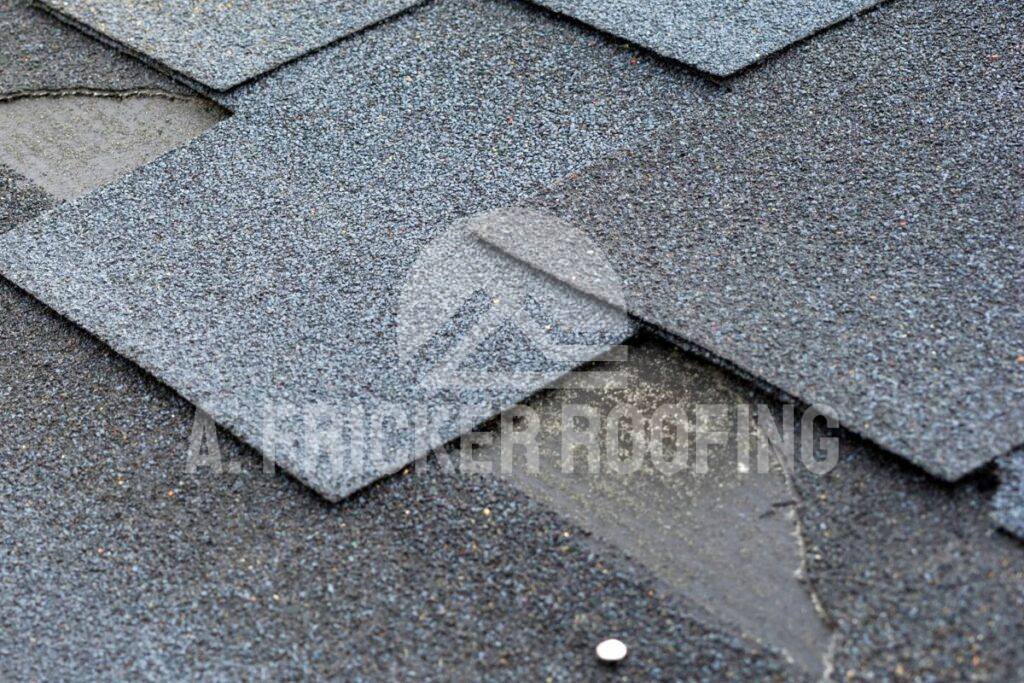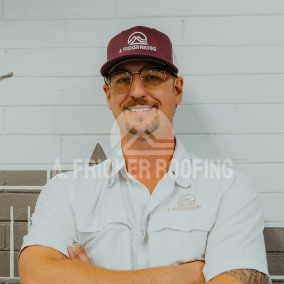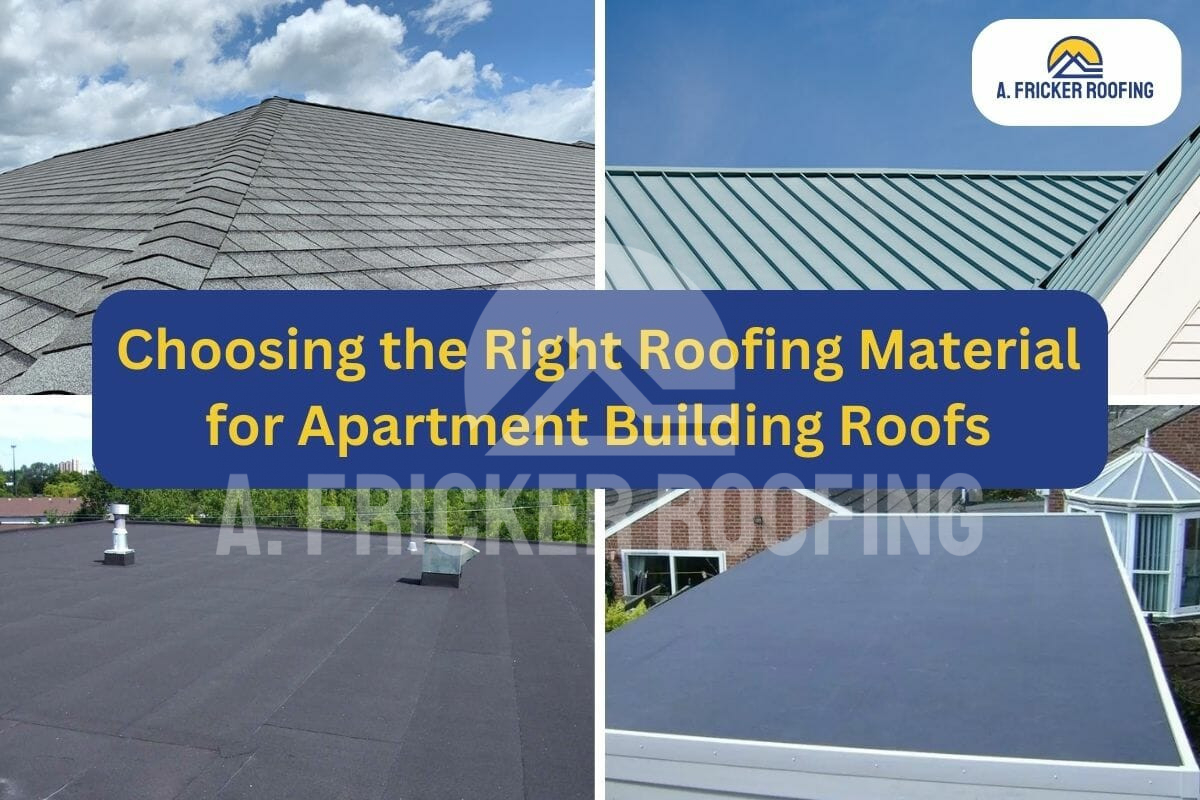
Did you know that Oklahoma experiences an average of 50 tornadoes per year? With such extreme weather conditions, it’s no wonder that roof repairs are a common occurrence in this state.
From missing shingles to gutter damage, there are a variety of issues that homeowners in Oklahoma may face when it comes to their roofs. In this blog post, we will explore eight of the most common types of roof repairs in Oklahoma, providing you with valuable insights and tips to ensure the longevity and durability of your roof.
So, whether you’re a homeowner looking to tackle these repairs yourself or someone seeking professional assistance, this article will provide you with the knowledge you need to address these types of roof repairs effectively.
The Most Common Types of Roof Repairs We Perform In Oklahoma
These repairs are broken down by the type of damage you’ll find.
1. Missing Shingles

Roofing shingles mainly go missing because of high winds, and since Oklahoma is a state that sees frequent tornadoes, it is quite common for this damage to occur. Most often, homeowners find shingles lying on their lawns after high winds or a big storm hit their roofs. If you notice the same, it’s important to address this issue promptly.
When shingles come off your roof, they create gaps in your roof’s protective barrier, allowing rainwater to seep into your home. This can cause structural damage, mold growth, and even compromise the integrity of your roof. Though missing shingles may not immediately cause leaks in your attic, if left missing for too long, they eventually will. Only regular inspections can help you determine the full scope of damage that missing shingles cause.
To fix this issue, you should contact a professional roofing contractor who can assess the damage and replace the missing shingles. They’ll ensure that the new shingles are properly installed and sealed, preventing any future issues.
2. Leaky Roofs

Roof leaks are a big concern among homeowners. No one wants droplets of water raining down on them while they’re sitting and watching TV. A leaky roof can cause significant damage to your home, leading to expensive repairs if not addressed immediately.
Though the most obvious reasons for roof leaks are nail pops and cracked boots, the most common causes of a leaky roof include damaged or missing shingles, clogged gutters, and inadequate flashing around chimneys and skylights. If you notice water stains on your ceiling or walls, damp spots, or the musty smell of mold and mildew, it’s important to take immediate action.
Inspect your roof for any signs of damage, such as cracked or curled shingles, and address any issues found. It’s recommended to hire a professional roofing contractor to fix a leaky roof properly and prevent further damage to your home.
3. Damaged Flashing

Roof flashing is an integral component of any roofing system, and it’s installed to prevent water infiltration around any penetrations on the roof, such as skylights, chimneys, dormers, and vents.
To identify damaged flashing, look for signs of rust, cracks, or gaps in the sealant.
If you notice any issues, it’s important to address them promptly. Repairing damaged flashing involves removing the old flashing and replacing it with new, properly sealed flashing.
4. Roof Punctures

Besides flat roofs, punctures are quite common on shingle roofs. One common type of roof puncture is caused by nails or screws that have been improperly installed or have come loose over time. These punctures can create openings for water to seep in, leading to damage and potential structural issues. Another type of roof puncture is caused by animals, such as mice or squirrels, who may chew or scratch at the roof’s surface, creating holes.
Roof punctures can also occur from falling branches, hailstorms, or even foot traffic. Addressing roof punctures is crucial to maintaining the integrity of your roof and preventing water damage.
5. Cracked Roof Tiles/Shingles

Cracked roof tiles or shingles can occur for many reasons, such as extreme weather conditions, improper installation, or natural wear and tear over time. These cracks can allow water to seep into your home.
If the crack is small, you may be able to repair it using roofing cement or sealant. However, if the damage is extensive, or if you notice multiple cracks in shingles, it’s best to consult a professional roofing contractor who can assess the situation and provide the necessary repairs or replacements to ensure the integrity of your roof.
6. Sagging Roof
A sagging roof is a big concern that not only disturbs the aesthetic appeal of your roof, but also damages your roof’s structural integrity. This can be caused by several reasons, including excessive weight from snow or debris, water damage, or weakened roof trusses. Regardless of the cause, a sagging roof can compromise the integrity of your entire home and pose a safety risk. If you notice that your roof is sagging, it’s important to address this issue as soon as possible.
Contact a professional roofing contractor to assess the extent of the damage and determine the appropriate repairs or reinforcements needed to restore the structural integrity of your roof. Remember, delaying repairs can lead to further damage and more expensive repairs down the line.
7. Clogged Gutters

Another common problem that can contribute to roof damage is clogged gutters. When your gutters become clogged with leaves, twigs, and other debris, they’re unable to carry water away from your roof properly. As a result, water can overflow and accumulate on the surface of the roof, leading to potential leaks, water damage, and even structural issues.
Clogged gutters can also contribute to ice dams during the winter months, which can cause significant damage to your roof and gutters. Regular gutter cleaning and maintenance can help prevent clogs and ensure that your gutters are functioning properly, protecting your roof and home from potential damage. Also, don’t forget to install durable gutter guards to prevent gutter clogging.
8. Hail Damage

When a hailstorm strikes, the force can result in the formation of cracks, dents, and punctures on the surface of your roof, depending on the material it’s made out of. This damage, if left unattended, poses a threat to the structural integrity of your roof, potentially allowing for water infiltration and additional structural issues to occur.
In light of the potential consequences, it is critical to engage in hailstorm damage roof repair. Following a hailstorm, a comprehensive roof inspection is advisable, including an examination for missing shingles or granule loss. Seeking the expertise of professional roofing contractors is a good choice when restoring and strengthening your roof’s condition after hail damage.
Final Thoughts
Now that you know a little bit more about the different types of roof repairs, you are aware of how natural phenomena and neglecting regular maintenance can cost you in the long run.
These forms of damage can range from minor repairs to the need for extensive replacements in certain areas of your roof. That is why it is crucial to schedule regular roof inspections with professional roofing experts who can assess and address any issues promptly.
Hire Professional Roofers In Oklahoma For Your Roof Repairs
If you notice signs of damage to your roof, including roof leaks, missing shingles, granule loss, ponding water, damaged skylights, and flashing due to severe hail storms or high winds, now is the time to hire professional roofers. A. Fricker Roofing and Waterproofing In Tulsa, OK, is a leading roofing company prioritizing the roof repair and replacement needs of residential and commercial building owners. Contact us today at (918) 402-7167 and consult with one of our experts about your roofing needs.



